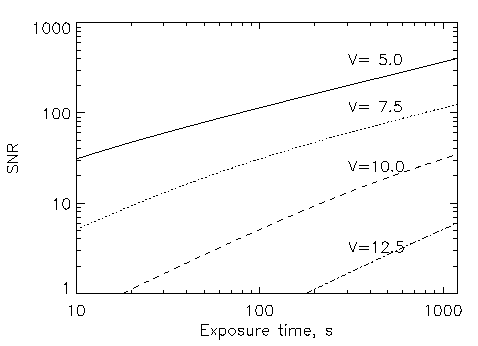CHIRON Overview
CHIRON is a highly stable cross-dispersed echelle spectrometer fed by fiber and intended primarily for precise radial velocities. Its major parameters are
- Spectral resolution R~80000 (with image slicer)
- Spectral range 410-870 nm, fixed.
- Total efficiency ~6%
CHIRON is presently deployed at the telescope. It is available to NOAO users since 2011B.
The Figure below shows main elements of CHIRON from the user perspective. We follow the path of starlight, directed towards the fiber module (FEM) by a diagonal mirror located in the telescope guiding-and-acquisition module, GAM (at certain position of the pickup arm). The star image is focused on a mirror with a hole; most of the light goes into the fiber, the remaining halo is reflected towards the acquisition/guiding camera. A small prism can be placed behind the mirror to feed calibration light (quartz or Th-Ar lamps) to the spectrometer.
The spectrometer is located in the coude room. The light beam emerging from the fiber can be re-shaped into a slit-like image by the image slicer , to increase spectral resolution without light loss. The slicer can be moved out of the way to work with bare fiber image (with spectral resolution decreased to R ~30 000) or to mask the fiber by slits (increase the resolution at the expense of light loss). A viewer with manually-activated mirror is used only for troubleshooting, to see the sliced image. Other user-controlled elements are the shutter, iodine cell which can be placed in or out of the beam, and the focusing stage. The CCD is operated by a GUI-driven data-acquisition program.
To specify observations, astronomer needs to decide whether the image slicer is needed, whether the iodine cell should be used, and what detector parameters are best suited for the program. Although these choices can be made in any combinations, only a subset of all combinations makes sense. Observing modes suitable for typical science applications are.
- Normal mode: use image slicer with 3x1 binning. Spectral resolution R=80000. Fast CCD readout (14s per image). Use for bright stars without iodne cell.
- Iodine mode: same as normal, but with the iodine cell and restricted spectral range.
- Fiber mode: no image slicer, 4x4 binning. Spectral resolution R~25000. Normal CCD readout (4s per image)
Each program must also specify required calibration data (Th-Ar and quartz spectra, bias frames, etc.).
CHIRON and its CCD are controlled by the ctioe1 computer, VNC connection to 139.229.12.29:9. Read the GUI user manual to learn how to operate it.
Spectral format of CHIRON is shown here, with appriximate wavelengths near order centers in red. The order numbers are indicated by the scales above and below. The vertical green line shows the division between two CCD amplifiers. See the order table here.
The Figure shows a portion of the Moon's spectrum around sodium D1, D2 lines recorded with CHIRON in January 2011.
Estimate of the signal-to-noise ratio per pixel vs. V-magnitude in the normal mode (top: image slicer, 3x1 binning, fast readout, R=80000) and fiber mode (bottom: fiber, 4x4 binning, normal readout, R=25000).
The IDL scripts used to produce these plots can serve to cover other non-standard modes: etc-norm.pro and etc-fiber.pro
Last updated: July 2014 A.Tokovinin
Updated on May 10, 2021, 7:09 am




